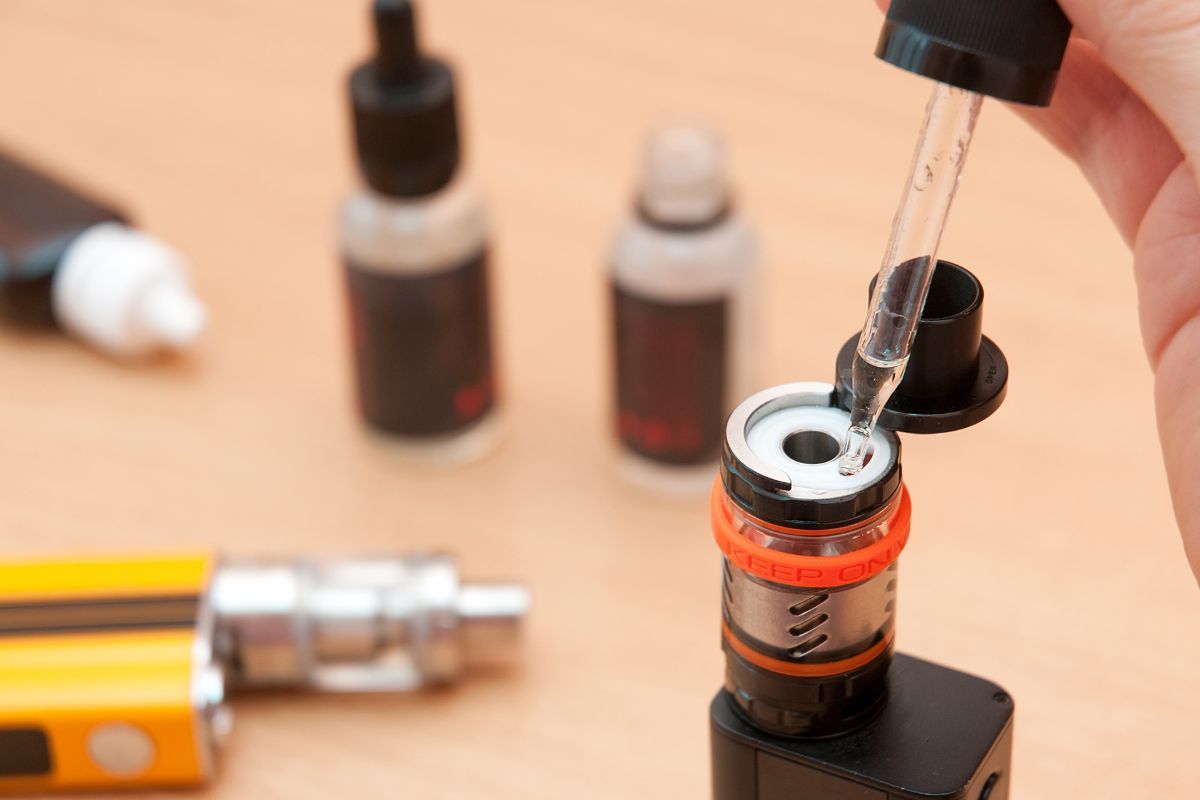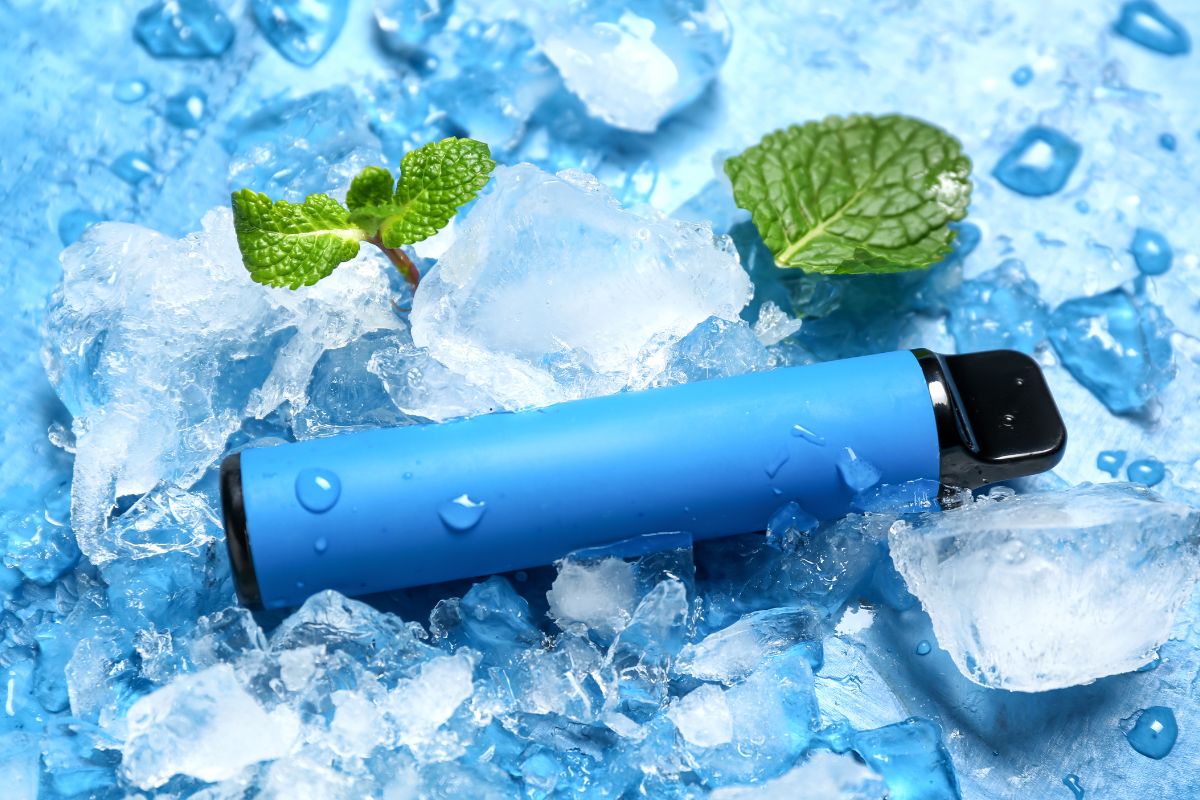Vaping has become a popular alternative to smoking, and vape juice, also known as e-liquid, is an essential component of the vaping experience.
But what exactly is in vape juice? In this article, we'll explore the ingredients found in vape juice and their effects on your health.
Introduction
Vape juice is a liquid that is heated and inhaled through an e-cigarette or vape device. It consists of several ingredients, including propylene glycol (PG), vegetable glycerin (VG), nicotine, flavorings, sweeteners, water, and additives. In this article, we'll take a closer look at each ingredient and its effects on your health.
Propylene Glycol (PG)
Propylene glycol, or PG, is a synthetic compound that is used as a food additive and in cosmetics, pharmaceuticals, and vape juice. PG is used in vape juice to produce a throat hit and carry flavorings. It is also used to thin out the liquid, making it easier to vaporize.
While PG is generally recognized as safe by the FDA, it can cause irritation and allergic reactions in some people. It has also been linked to respiratory problems, such as asthma and bronchitis, when inhaled in large amounts.
Vegetable Glycerin (VG)
Vegetable glycerin, or VG, is a natural compound derived from vegetable oils. It is commonly used in food, cosmetics, and vape juice. VG is used in vape juice to produce thicker vapor clouds and a smoother inhale.
VG is generally considered safe by the FDA, but it can cause some side effects, such as dry mouth, sore throat, and allergic reactions.
Nicotine
Nicotine is a highly addictive substance that is found in tobacco products and some vape juices. It is added to vape juice to provide a sensation similar to smoking and to satisfy cravings.
Nicotine can have a range of effects on the body, including increased heart rate, elevated blood pressure, and reduced appetite. It can also cause addiction, withdrawal symptoms, and increased risk of heart disease and stroke.
Flavorings
Flavorings are added to vape juice to create a variety of tastes and sensations. There are thousands of different flavorings available, ranging from fruity and sweet to spicy and savory.
While most flavorings are considered safe for consumption, some can be harmful when inhaled. Some flavorings contain diacetyl, a chemical that has been linked to a lung disease known as popcorn lung.
Sweeteners
Sweeteners are added to vape juice to enhance the taste and create a smoother inhale. They can be natural or artificial and include ingredients such as sucralose, stevia, and erythritol.
While sweeteners are generally considered safe, they can cause some side effects, such as digestive issues and allergic reactions.
Water
Water is used in vape juice to thin out the liquid and create a smoother inhale. It is also used to dilute the nicotine concentration in some vape juices.
Additives
Additives are used in vape juice to enhance the flavor, color, and texture of the liquid. They can include ingredients such as preservatives, stabilizers, and emulsifiers.

The Effects of Vape Juice Ingredients on Your Health
While the ingredients in vape juice are generally considered safe for consumption, there are some potential health risks associated with vaping. The most common side effects include irritation of the throat and lungs, coughing, and dry mouth.
Nicotine is a highly addictive substance and can have long-term health effects, such as increased risk of heart disease and stroke. It can also have negative effects on brain development, particularly in young people.
PG and VG can cause irritation and allergic reactions in some people, and prolonged exposure to these chemicals may have negative effects on lung function. Flavorings can also be harmful when inhaled, particularly those containing diacetyl.
It is important to note that the long-term effects of vaping are not yet fully understood, and more research is needed to determine the health risks associated with these products.
Choosing the Right Vape Juice
When choosing a vape juice, it is important to consider your personal preferences, as well as the potential health risks associated with the ingredients. Look for products that are made with high-quality, food-grade ingredients and avoid those that contain harmful chemicals or additives.
You should also consider the nicotine concentration in the vape juice. Higher nicotine concentrations can increase the risk of addiction and negative health effects, so it is important to choose a concentration that is appropriate for your needs.

Mixing Your Own Vape Juice
Some vapers choose to mix their own vape juice, using a combination of PG, VG, flavorings, and nicotine. While this can be a cost-effective option, it is important to be aware of the potential health risks associated with DIY mixing.
Improperly mixed vape juice can contain harmful chemicals and can be dangerous to inhale. It is important to follow a recipe and use high-quality ingredients to ensure the safety and efficacy of your DIY vape juice.
Storage and Shelf Life
Vape juice should be stored in a cool, dry place and away from direct sunlight. Exposure to heat and light can degrade the quality of the liquid and reduce its shelf life.
Most vape juices have a shelf life of 1-2 years, but this can vary depending on the specific product and ingredients. It is important to check the expiration date and use the vape juice before it goes bad.

Potential Risks of Vaping
While vaping is generally considered to be less harmful than smoking, there are still some potential risks associated with these products. Some of the most common risks include:
- Irritation of the throat and lungs
- Coughing and shortness of breath
- Dry mouth and dehydration
- Increased heart rate and blood pressure
- Negative effects on brain development (in young people)
- Addiction to nicotine
- Increased risk of heart disease and stroke
It is important to be aware of these risks and to use vape products responsibly and in moderation.

Conclusion
Vape juice is an essential component of the vaping experience, and it is important to understand the ingredients and potential health risks associated with these products. While the ingredients in vape juice are generally considered safe, there are still some potential health risks associated with vaping, particularly when it comes to nicotine, PG, VG, and flavorings.
When choosing a vape juice, it is important to consider your personal preferences and the potential health risks associated with the ingredients. You should also be aware of the potential risks of DIY mixing and store your vape juice properly to ensure its quality and safety.
If you are considering vaping, it is important to be aware of the potential risks and to use these products responsibly and in moderation.
FAQs about vape juice
Is vaping safer than smoking?
Vaping is generally considered to be less harmful than smoking because it does not produce smoke, which contains many harmful chemicals. However, vaping still carries some potential health risks, particularly when it comes to nicotine, PG, VG, and flavorings. If you are considering vaping as an alternative to smoking, it is important to be aware of the potential risks and to use these products responsibly and in moderation.
What are the most common ingredients found in vape juice?
The most common ingredients found in vape juice are propylene glycol (PG), vegetable glycerin (VG), flavorings, and nicotine (optional). PG and VG are used as base liquids to create vapor, while flavorings add taste and aroma to the vape juice. Nicotine is an optional ingredient that can be added to the vape juice to provide a hit of nicotine.
What are the potential health risks associated with vaping?
The potential health risks associated with vaping include irritation of the throat and lungs, coughing, dry mouth, increased heart rate and blood pressure, negative effects on brain development (in young people), addiction to nicotine, and increased risk of heart disease and stroke. While the ingredients in vape juice are generally considered safe, more research is needed to fully understand the long-term health effects of vaping.
Can I mix my own vape juice?
Yes, you can mix your own vape juice using a combination of PG, VG, flavorings, and nicotine (optional). However, it is important to be aware of the potential health risks associated with DIY mixing, as improperly mixed vape juice can contain harmful chemicals and be dangerous to inhale. It is important to follow a recipe and use high-quality ingredients to ensure the safety and efficacy of your DIY vape juice.
How should I store my vape juice?
Vape juice should be stored in a cool, dry place and away from direct sunlight. Exposure to heat and light can degrade the quality of the liquid and reduce its shelf life. Most vape juices have a shelf life of 1-2 years, but this can vary depending on the specific product and ingredients. It is important to check the expiration date and use the vape juice before it goes bad.



Leave a comment
This site is protected by hCaptcha and the hCaptcha Privacy Policy and Terms of Service apply.